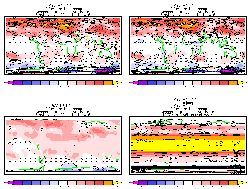If you've been reading the Economist recently, you'll find a 2-page advert from a nice chap who signs himself "Dave". But the letter head tells you he is really David J O'Reilly, CEO of Chevron. And he invites you to go to willyoujoinus.com. The headline is "It took us 125 years to use the first trillion barrels of oil. We'll use the next trillion in 30. So why should you care?". With my biases, I naturally assumed this was some pinko-leftist environmental type message. But... no. Reading the text (find the ad itself here though it crashes my acrobat 5.0) it says "Energy will be one of the defining issues of this century, and one thing is clear: the era of easy oil is over... Energy demand is soaring as never before and driving economic growth. And improved standards of living are requiring increasing amounts of energy... Many of the world’s oil and gas fields are maturing. And new energy discoveries are mainly occurring in places where resources are difficult to extract—physically, technically, economically, and politically. When growing demand meets tighter supplies, the result is more competition for the same resources... We can wait until a crisis forces us to do something. Or we can commit to working together, and start by asking the tough questions: How do we meet the energy needs of the developing world and those of industrialized nations? What role will renewables and alternative energies play? What is the best way to protect our environment? How do we accelerate our conservation efforts? Whatever actions we take, we must look not just to next year, but to the next 50 years...." and so on.
No mention of climate change, global warming, anything like that (just a v brief mention of "environment" and no more). It looks rather more to me like they are trying to excuse the current high price of oil more than anything else.
Searching for "climate change" on the Chevron website I found Chevron's Four-Fold Action Plan to Address Global Climate Change (ah, the four-fold way, glasshopper...) which "Support[s] flexible and economically sound policies and mechanisms that protect the environment... The use of fossil fuels to meet the world's energy needs has contributed to an increase in greenhouse gases (GHGs) -- mainly carbon dioxide (CO2) and methane -- in the Earth's atmosphere. There is a widespread view that this increase is leading to climate change, with adverse effects on the environment." This is fair enough (you wouldn't get Bush saying that) though a bit weak, and rather more importantly its buried.
My interpretation of the ad, then, is "yes we know that gas prices for your grossly inefficient SUV are going through the roof. But don't blame us". So they are the evil one.
BP has also been advertising in the Economist. They are keen to push their enviro qualities and have even taking to calling themselves "beyond petroleum". Some of this is just PR gloss: they're still in the business of selling fuel for people to burn, no matter that they're reduced their own emissions by 9%. they say: "One of the great challenges facing mankind is the increasing temperature of the planet. This increase is believed to be associated with the production and consumption of carbon based fuels – coal, oil and gas – which all increase levels of greenhouse gases in our atmosphere". But, they get marks for the PR. And they are even prepared to say "Based on current scientific opinion, we believe that it’s realistic to promote actions designed to stabilize carbon dioxide concentrations at around 500-550 parts per million, consistent with limiting global temperature rise to around 2°C". Which is a hard target to hit... I wonder if they are serious? Quite possibly... they have a list of policy options there. They link to an greenhouse effect animation from the Science Museum - so they score points for accepting the scientific view; they also get points for not comparing it to a greenhouse. OTOH they (or perhaps the science museum) loses points for implying that the GHE is caused my multiple reflections from the sfc to the top of the atmosphere. But maybe thats hoping for too much.
They even have a section on "Supporting Research". Woo-hoo! Looks good. Free money for cliamte research?!? Sadly no... a bit more applied: "We support the search for lower carbon energy alternatives and solutions to climate change. We sponsor research activities at leading universities around the world".
Despite that last one, I'll assign them to the "good" category for now :-)
ps: Chevron invite you to join their "discussion". However, with wacko postings like this:
...already provided the new science which makes a reality of unlimited free energy from the vacuum of the universe. The entire planet can be powered electrically without burning fuel of any sort. The underlying principles have already been demonstrated by the creation of more than a dozen types of successful hardware. I understand the Chinese are aware of the underlying science, but I certainly hope the United States will provide the solution first. I find your unique approach to problem solving exciting. I realize that free energy may work against your present source of revenue, but the full deployment of free energy will take a long time and there is plenty of money to be made with free energy to replace your present revenue.
is there any point joining in? Even sci.env tends to be less wacky than that!



